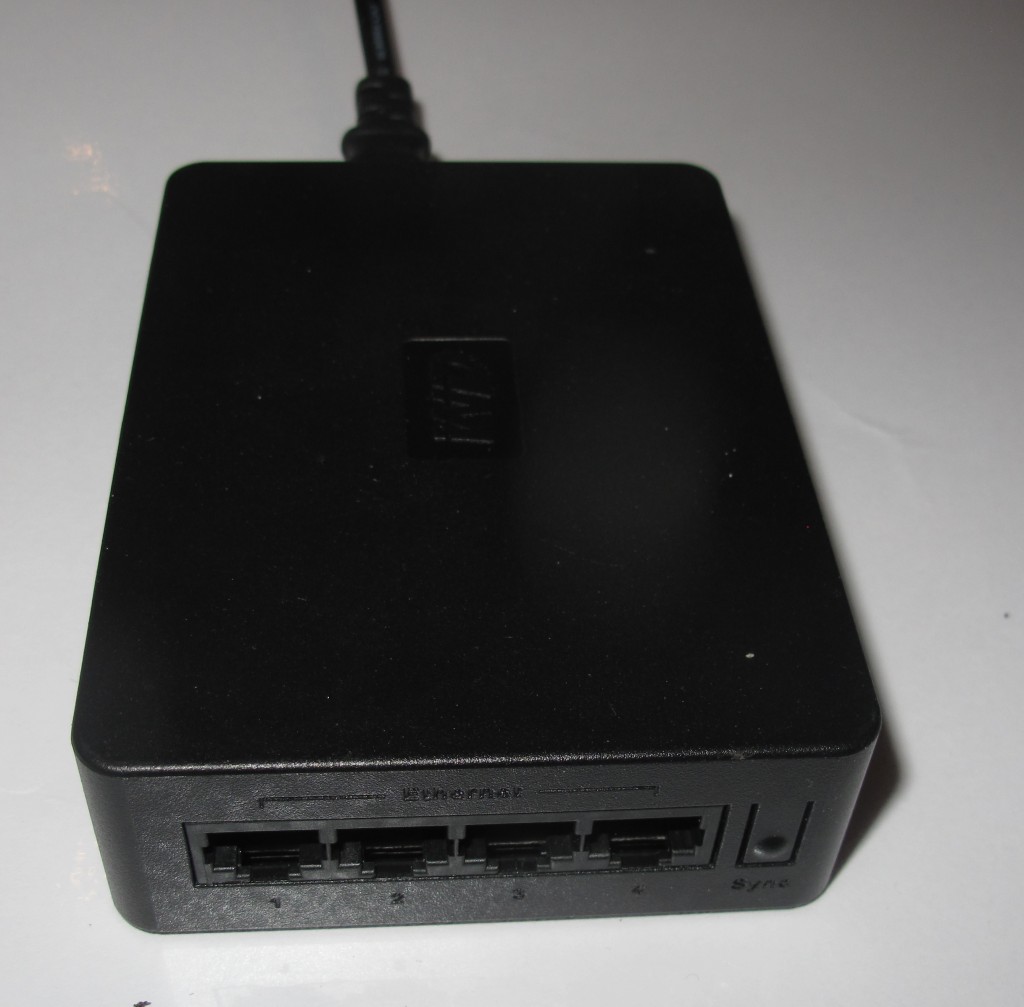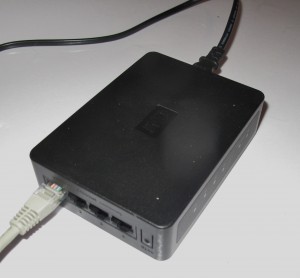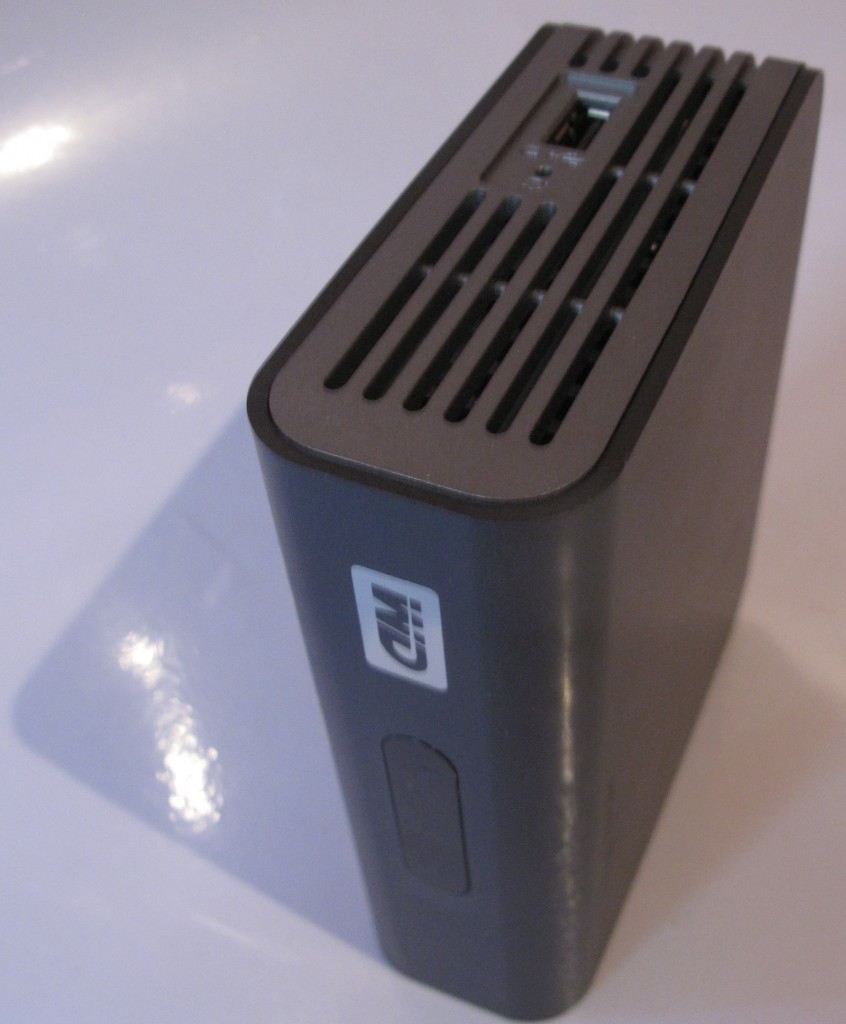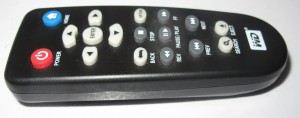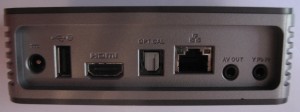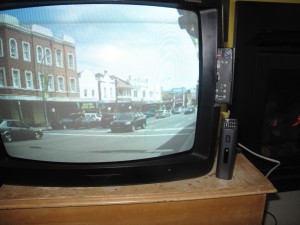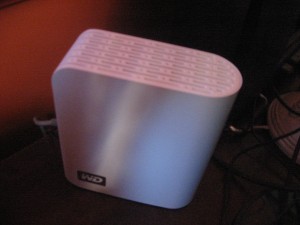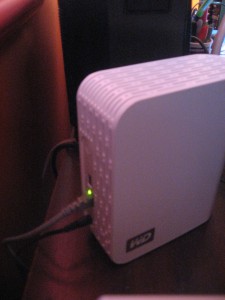Product Review–Western Digital LiveWire HomePlug AV kit
Introduction
I am reviewing the Western Digital LiveWire HomePlug AV kit, which is a pair of Ethernet switches that also have HomePlug AV connectivity. Here, this kit is being pitched at people who want to connect Internet-enabled video equipment to the home network and Internet connection without laying down new wiring to the router.
Price:
Recommended Retail Price AUD$169.99 for a two-unit kit
LAN Connectivity
| Connectivity for each unit | |
| Ethernet | 4 ports |
| HomePlug | HomePlug AV SimpleConnect |
The device itself
Setup
The Western Digital LiveWire kit is able to be used in a “plug-and-play” manner with a secure HomePlug AV segment.
There is the ability to create a separate HomePlug AV network segment by you pressing the “Simple-Connect” buttons (labelled SYNC) on each device one after another quickly. Here, you don’t have to think of new network identifiers or device passcodes for each of the member devices in this segment.
Performance
This unit can demonstrate a good level of resilience to known interference like switch-mode power supplies or electrical motors on the same circuit and yield a useable HomePlug connection. It may initially yield a low connection speed until the link is assessed by each HomePlug device on each end. This is more so with links that are on different circuits and may show up heavily on older electrical installations.
Of course, the HomePlug AV segment created by these devices worked properly alongside an existing HomePlug 1.0 Turbo (85Mbps) segment that has been working as the main household HomePlug segment for the network. As I have known before the segments that work on the different HomePlug standards aren’t compatible but can coexist as separate segments.
As well, unlike some cheaper Gigabit Ethernet switches that I have used, this kit works properly with UPnP devices like the WDTV Live network media adaptor which I tested it with. Here, it worked as expected for media playback from the Internet and my WD MyBook World network-attached storage which worked as a UPnP AV media server.
Limitations and Points Of Improvement
The WD LiveWire units could benefit from the SYNC button and HomePlug light working to a proper cadence especially when integrating another HomePlug AV device to the same segment. This is more so if the network setup involves multiple established devices scattered around the house.
As well, there could be a variant model released that uses a four-port Gigabit Ethernet switch which can be of benefit if the switch is to be connected to two or more devices like a network-attached storage and a recent-issue computer. It would also be of benefit if the switch is to serve as a HomePlug AV “on-ramp” for a Gigabit-Ethernet equipped router or Ethernet backbone. This may not happen until HomePlug AV2, which is a higher-throughput HomePlug standard, is properly ratified.
Similarly, there could be a variant of this switch that can be an 802.3af / 802.3at compliant Power-Over-Ethernet power supply for four devices that get their power over the Ethernet cable. This would come in handy with those IP telephones, network-based surveillance cameras and access points that work to this standard for network-based power.
Of course, you may not expect much from a company whose interest is more on storage devices rather than network infrastructure hardware.
Conclusion
I would still recommend this HomePlug AV kit as being suitable for use when connecting a cluster of network-connected equipment like Internet-enabled home-entertainment equipment to the home network. The fact that both the HomePlug AV adaptors come with integrated multi-port Ethernet switches can increase their utility value such as increasing Ethernet points with routers that have Ethernet ports that are all used up including single-port routers like most entry-level ADSL modems.
Similarly, one of these units can be used as part of a setup for bridging data between a legacy HomePlug 1.0 segment and a HomePlug AV segment or “pushing out” a HomePlug AV segment on a country property by creating another HomePlug AV segment. With these units, this can be done while maintaining Ethernet connectivity for network devices at these points.
Declaration Of Benefit
After I have reviewed the WD LiveWire HomePlug AV kit, I offered to buy the actual review sample units from Western Digital via their PR agency and they sold it at around 30% off the recommended retail price. This has not affected and does not affect my relationship with this company or how I review their products.

